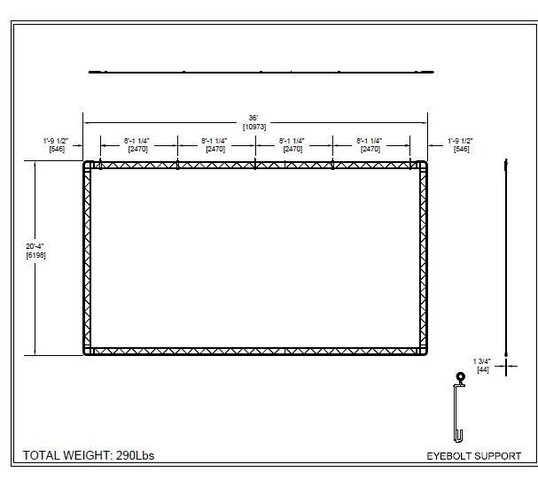Hi Everyone,
I am a Technical Director and we are looking to get a new movie screen capable of handling passive 3D for Front Projection only. As everyone knows Movie Screens are not that cheap. I am looking for a screen 20'H by 36'W to fit in our proscenium. I have gotten a few quotes back from some of the major manufacturers (Stewart and Da-lite) and the cost of the frame and screen material has been in the $30K-45K range. Stewart being more expensive as they are the only ones that can provide a non-seamed screen the size I need. I was told about a company in Canada that is suppose to be very good called Strong MDICinema. They got back to me with a quote for a frame and screen for only $10K, and based on the specs it has a better screen Gain than the other manufacturers. It just seemed like it was too good of a deal to be true. I was wondering if anyone else has used Strong MDICinema or can speak about the quality of their product. One thing I know is, the screen will require some welded pvc seams, but this shouldn't be an issue once the screen is front light. The MDI Screen material they speced is the Stereo3D which has a 2.2 gain. Any suggestions, help or insight to why the price is so reasonable would be a great help.
I am a Technical Director and we are looking to get a new movie screen capable of handling passive 3D for Front Projection only. As everyone knows Movie Screens are not that cheap. I am looking for a screen 20'H by 36'W to fit in our proscenium. I have gotten a few quotes back from some of the major manufacturers (Stewart and Da-lite) and the cost of the frame and screen material has been in the $30K-45K range. Stewart being more expensive as they are the only ones that can provide a non-seamed screen the size I need. I was told about a company in Canada that is suppose to be very good called Strong MDICinema. They got back to me with a quote for a frame and screen for only $10K, and based on the specs it has a better screen Gain than the other manufacturers. It just seemed like it was too good of a deal to be true. I was wondering if anyone else has used Strong MDICinema or can speak about the quality of their product. One thing I know is, the screen will require some welded pvc seams, but this shouldn't be an issue once the screen is front light. The MDI Screen material they speced is the Stereo3D which has a 2.2 gain. Any suggestions, help or insight to why the price is so reasonable would be a great help.



